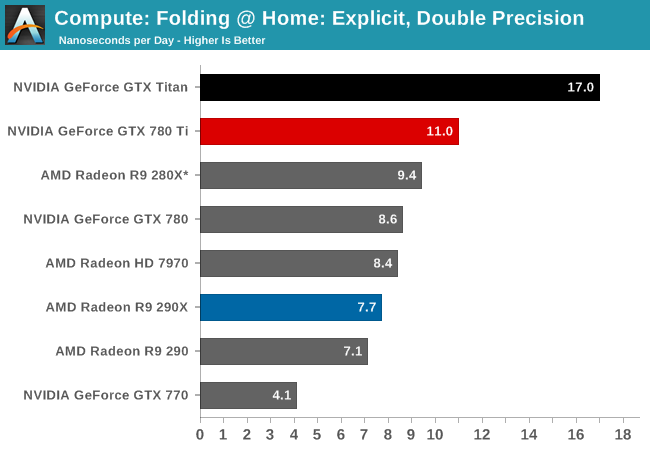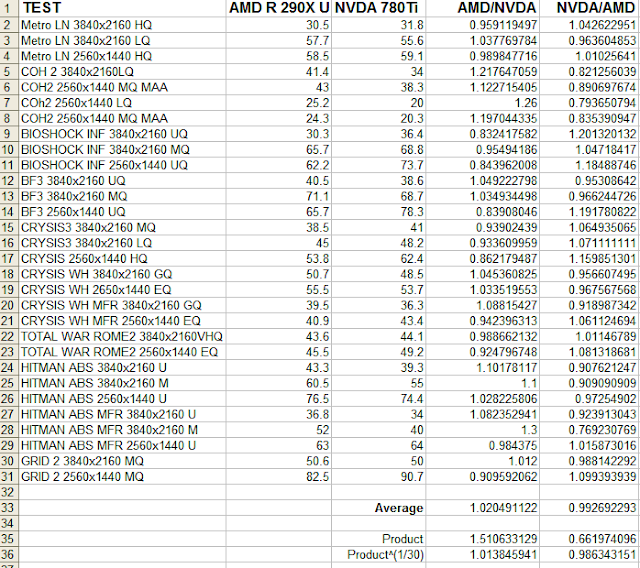I copied down the data in the above spreadsheet into my own spreadsheet and weighted the benchmarks so that these three conditions were satisfied:
- All benchmarks in a single game have a total weight of 1
- All benchmarks of the same resolution in a single game total to the same weight (in this case 0.5 since the only resolutions are 3840x2160 and 2560x1440)
- All benchmarks of the same resolution in a single game have the same weight value
Then the weighted arithmetic means of the ratios are actually the opposite of the unweighted means: AMD/NVIDIA = 0.992, NVIDIA/AMD = 1.020; as well as the weighted geometric mean: AMD/NVIDIA = 0.986, NVIDIA/AMD = 1.014.
And for what it's worth, comparing just the 3840x2160 benchmarks gives weighted arithmetic means of AMD/NVIDIA = 1.034 and NVIDIA/AMD = 0.977, and comparing just the 2560x1440 benchmarks gives weighted arithmetic means of AMD/NVIDIA = 0.951 and NVIDIA/AMD = 1.064 (the weighted geometric means are similar).
(I can give a picture of my spreadsheet upon request.)


